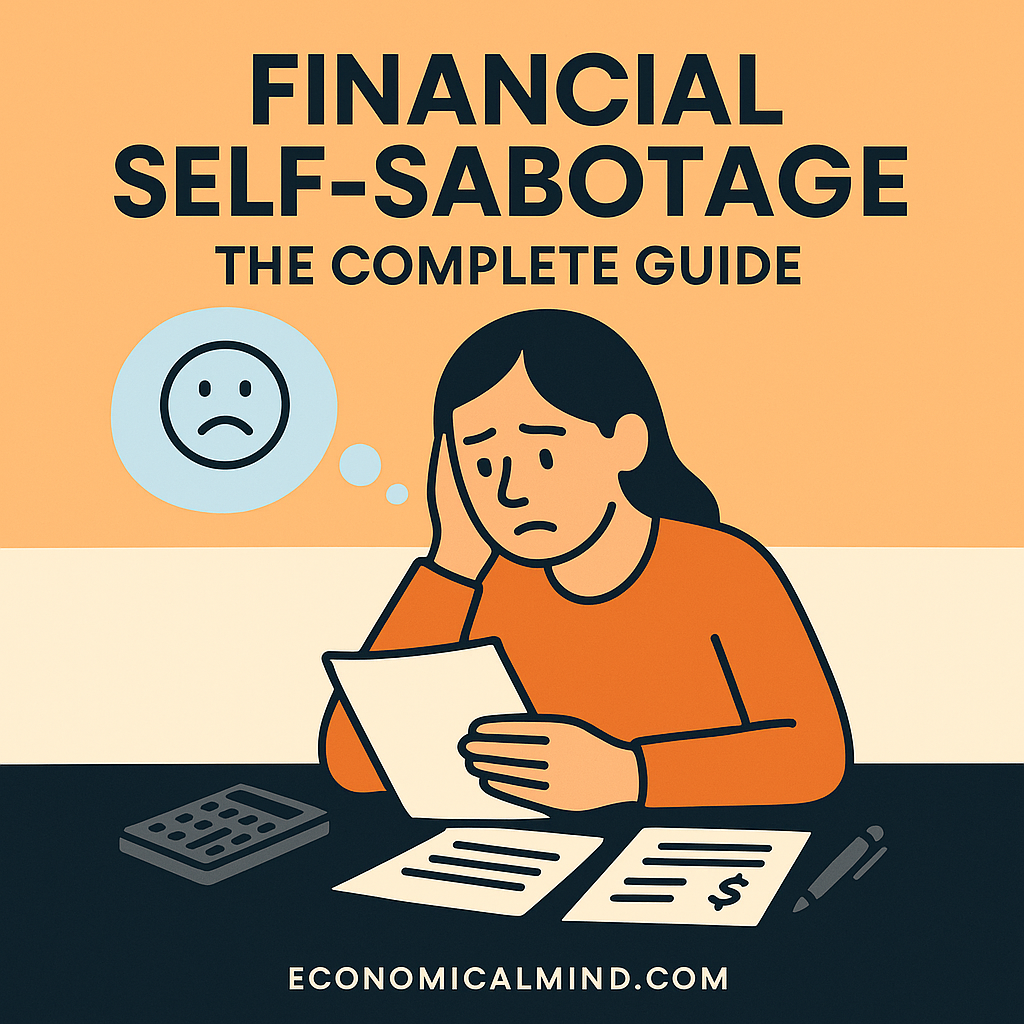
You work hard, make decent money — but somehow, your bank account never grows. That pattern isn’t just about budgeting; it’s often a sign of financial self-sabotage. This guide breaks down why we unconsciously work against our own money goals and how to stop the cycle for good.
What Is Financial Self-Sabotage?
Financial self-sabotage happens when your actions conflict with your financial intentions. You say you want to save, but you overspend. You plan to invest, but you procrastinate. These habits aren’t about laziness — they often stem from emotions, beliefs, or past experiences around money.
Example: You set a goal to pay off debt but end up shopping online after a stressful week. Emotion temporarily wins over logic.
Why We Self-Sabotage with Money
- Emotional Comfort – Spending can act like a quick fix for stress or boredom.
- Fear of Success or Failure – Subconsciously believing you’re “bad with money” can block progress.
- Low Self-Worth – Feeling undeserving of financial stability often leads to self-defeating choices.
- Lack of Awareness – You can’t change what you don’t track.
- Social Pressure – Comparing yourself to others online fuels spending that doesn’t match your values.
Pros of Addressing Financial Self-Sabotage
1. Improved Confidence
Understanding your money patterns gives you back control.
Example: Tracking expenses replaces guilt with clarity.
2. More Consistent Progress
You stop undoing your own progress and start building real momentum.
Example: Instead of restarting your savings every few months, you stick with it.
3. Healthier Relationship with Money
You stop seeing money as the enemy and start viewing it as a tool.
Example: You make choices from intention, not impulse.
4. Emotional Growth
Recognizing your triggers helps you handle stress without overspending.
5. Long-Term Stability
Overcoming self-sabotage leads to habits that last — not quick fixes.
Cons of Ignoring Financial Self-Sabotage
1. Repeating the Same Mistakes
Without awareness, bad habits keep looping.
Fix: Keep a simple money journal to notice patterns.
2. Growing Debt or Financial Anxiety
Avoiding the issue only increases stress and instability.
Fix: Start small — automate bills or payments to reduce friction.
3. Lost Opportunities
Fear-based decisions can delay investing or career growth.
Fix: Take small, low-risk steps to rebuild trust in yourself.
4. Strained Relationships
Money tension often spills into relationships or partnerships.
Fix: Communicate openly about goals and triggers.
5. Burnout and Shame
Constantly “starting over” drains your motivation.
Fix: Replace shame with curiosity — ask why a setback happened, not just how to fix it.
Best Practices for Breaking Financial Self-Sabotage
1. Identify Emotional Triggers
Notice what situations or emotions lead to poor money decisions — stress, loneliness, comparison, or boredom.
2. Replace Reactivity with Reflection
Pause before big financial moves. Ask: What feeling am I trying to solve right now?
3. Set Automatic Systems
Automate savings and bill payments to remove emotional decisions from the process.
4. Use the “24-Hour Rule”
Delay impulse purchases by a day — you’ll often lose the urge.
5. Reframe Self-Talk
Swap “I’m terrible with money” for “I’m learning how to handle money better.”
6. Practice Financial Mindfulness
Spend a few minutes weekly reviewing your budget without judgment. Awareness builds confidence.
7. Surround Yourself with Positive Examples
Follow people or communities that model healthy financial behavior.
8. Start with Small Wins
Pay off a small debt or hit a $500 savings goal — confidence compounds.
9. Work with a Therapist or Coach
Money habits are emotional habits — professional support can accelerate breakthroughs.
10. Celebrate Progress
Reward yourself when you make consistent choices that align with your goals.
Key Takeaway
Financial self-sabotage isn’t about numbers — it’s about mindset. By understanding your emotional patterns, setting systems, and practicing awareness, you can break the cycle and finally start moving toward lasting financial peace.
